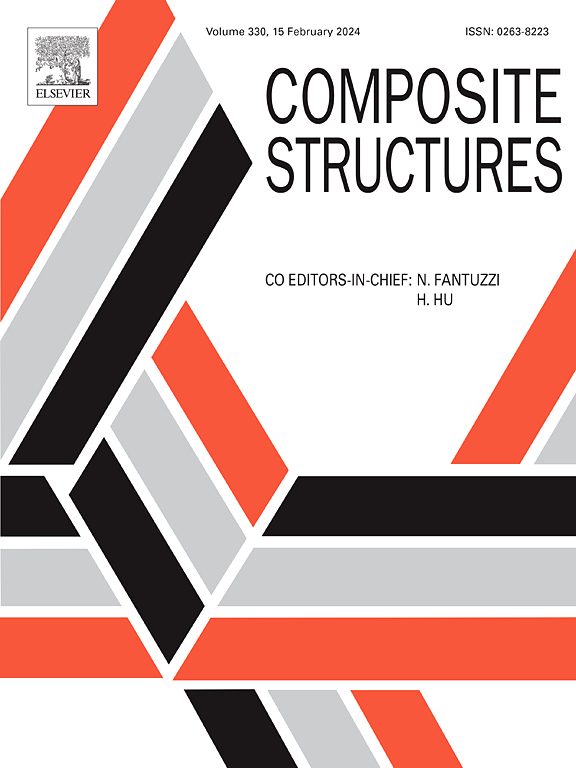Design and optimization of a mechanical metamaterial featuring dual tunability in auxeticity and bandgap modulation
IF 6.3
2区 材料科学
Q1 MATERIALS SCIENCE, COMPOSITES
引用次数: 0
Abstract
This study introduces an optimized nested sinusoidal re-entrant (oNSR) mechanical metamaterial that achieves dynamically tunable auxeticity and bandgaps under applied strain. To enhance the metamaterial’s vibration-blocking capabilities (relative bandgap width) and auxetic behavior (effective Poisson’s ratio), support vector machine regression was utilized to model the nonlinear relationships between geometric parameters and performance indexes, followed by a genetic algorithm based multi-objective optimization. Furthermore, Sobol sensitivity analysis identified the influence of the parameters, thereby guiding the optimization process. The mechanical behavior of the optimized structure was evaluated through numerical simulations and experimental tests, revealing a notable auxetic effect with a minimum effective Poisson’s ratio of −0.25 and a tunable bandgap around 210 Hz. Compression-induced tuning further generated new bandgaps near 155 Hz, enhancing wave suppression across multiple frequencies. Group velocity analysis confirmed directional energy propagation, while frequency response validation demonstrated consistent bandgap performance under varied strain. These findings underline the oNSR’s potential in adaptive engineering applications, offering enhanced structural stability, stress management, and elastic wave manipulation capability.
求助全文
约1分钟内获得全文
求助全文
来源期刊

Composite Structures
工程技术-材料科学:复合
CiteScore
12.00
自引率
12.70%
发文量
1246
审稿时长
78 days
期刊介绍:
The past few decades have seen outstanding advances in the use of composite materials in structural applications. There can be little doubt that, within engineering circles, composites have revolutionised traditional design concepts and made possible an unparalleled range of new and exciting possibilities as viable materials for construction. Composite Structures, an International Journal, disseminates knowledge between users, manufacturers, designers and researchers involved in structures or structural components manufactured using composite materials.
The journal publishes papers which contribute to knowledge in the use of composite materials in engineering structures. Papers deal with design, research and development studies, experimental investigations, theoretical analysis and fabrication techniques relevant to the application of composites in load-bearing components for assemblies, ranging from individual components such as plates and shells to complete composite structures.
 求助内容:
求助内容: 应助结果提醒方式:
应助结果提醒方式:


